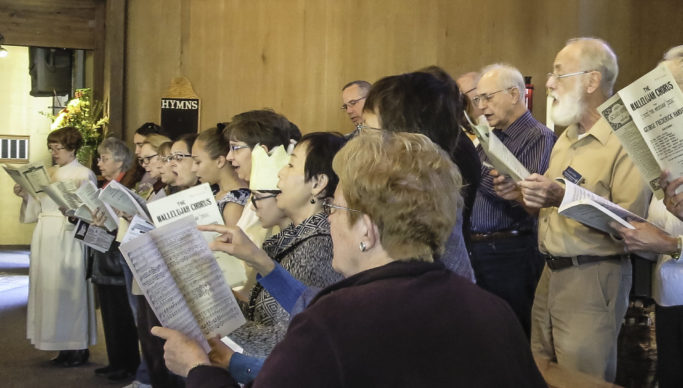
Worship Professor, Will Bishop, Asked What Do Smaller Churches Sing On Sundays – Hymns? Top 40? Oldies? – The Answer: Anything Goes
- By Tami Lang --
- 08 Aug 2023 --
Sing to the Lord a new song – Psalms 96:1
A survey published in 1939 revealed that the most popular song in churches was “What a Friend We Have in Jesus,” followed by “I Am Thine, Oh Lord,” “Standing on the Promises,” “Have Thine Own Way” and “The Old Rugged Cross.” High up there on the top ten was the evergreen “Amazing Grace.”
84 years later “Amazing Grace” is still up there, along with “The Old Rugged Cross. But according to a new study undertaken by Will Bishop, associate professor of church music and worship at Southern Baptist Theological Seminary in Louisville, Kentucky, there the resemblance ends.
Not only have four-plus generations wrought an upheaval in the breadth of music chosen for worship services, but there are now distinct differences between what a large Baptist church will offer, music-wise, and what a small-town church in the vale will prompt its congregation to sing.
The big churches, according to Bishop, have full-time staffers who follow the latest trends and are hep to the latest songs. The result is one could go to any big church on a Sunday and reasonably expect the same or similar playlist one would experience at any other big church on a Sunday.
Of the big churches, Bishop says, “They’re all going to the same conferences; they’re all kind of hanging out with the same people.”
But with a small church, he adds, “you may not have any connections. You’re not going to conferences. You may not know what’s going on in the bigger world.”
Consequently, as Bishop puts it, “Smaller churches are like the Wild West—anything goes.”
Bishop wanted his students to know what to expect when they start working in churches. So he sent surveys to more than 900 congregations in five different parts of the country: Louisville, Memphis, Oklahoma City and New York, along with rural Colorado and Louisiana.
He asked details, like who picked the songs and whether churches sang contemporary songs or hymns, as well as asking for a church’s favorite hymns.
He found that about 20% sang more hymns than contemporary songs; about 33% chose a balance of hymns and modern tunes; while 40% sang more contemporary than traditional.
What songs? A pandemic and post-pandemic favorite, “What a Friend We Have in Jesus,” spoke to the loneliness and isolation felt by many of the faithful. Otherwise, Bishop’s top five list had the contemporary, “Living Hope,” co-written by Phil Wickham, at Number One, followed by the modern hymn “In Christ Alone,” and then three older hymns: “It Is Well with My Soul,” “Amazing Grace” and “How Great Thou Art.”
Bishop says if you just look at the top 20 charts of worship songs—which feature mainly new songs, just as Billboard’s Top 40—you’ll lose sight of the fact that “hymn singing is not dead. At least among Southern Baptists.”
The obvious takeaway is that local churches choose what’s right for their particular and varied identity rather than following the latest trends. Martin Cherry, an associate pastor and worship leader at Flatonia Baptist Church in Texas, said, “When churches try to push too hard, in different styles of music, it’s like asking your people to put on a costume, pretending to be something you’re not.”
“Living Hope” may be right for many congregations, but simply didn’t fly with Flatonia’s parishioners.
But on the other hand, Bishop’s research showed some anomalies—perfectly secular tunes that find favor with certain churches. Carole King’s “You’ve Got A Friend” and Bill Withers’ “Lean on Me” for sure bring comfort and inspiration. But “Take Me Home, Country Roads” and “The Lion Sleeps Tonight?”
As Bishop commented, if a church was to do a “Take Me Home, Country Roads” sing along, “I’d like to see a video of that.”


















